

The digitization has transformed how we interact with information. From the blogs we browse to the websites we visit, the way content is written and presented directly determines its success. Writing for the web is no longer just about stringing words together—it’s about understanding how people consume content online and tailoring it to meet their needs.
Unlike traditional writing, web content must cater to both the reader and the algorithm. Readers look for clarity, brevity, and engagement, while search engines favor well-structured, keyword-optimized content. To master this balance, writers need to embrace effective communication and content structure while refining their website writing skills.
In this blog, we’ll explore the art and science of writing for the web and share proven strategies to help you connect with readers, drive engagement, and boost results.

The shift toward a digital-first world is undeniable. Today, audiences spend hours online—researching products, consuming entertainment, and learning new skills. Websites have become the primary touchpoints for brands, businesses, and individuals.
Consider these statistics:
This shift proves the need for concise, clear, and engaging content that immediately delivers value. If your website writing doesn’t grab attention in seconds, your audience will move on.
For writers, this digital dominance presents both an opportunity and a challenge: the opportunity to reach audiences globally and the challenge to communicate effectively amidst endless distractions.
Writing for the web demands a deep understanding of how readers behave online. Unlike traditional readers who settle into a book or article with time on their side, web readers operate in a fast-paced, distraction-filled environment where every second counts. The way they interact with content isn’t leisurely—it’s driven by a need for speed and efficiency.
When readers land on a webpage, they don’t read word-for-word like they might with a novel or a newspaper article. Instead, they scan and skim, searching for nuggets of information that answer their questions quickly or offer instant value. Their eyes dart across the screen, hunting for headlines, subheadings, bullet points, and bold text—anything that stands out amidst the sea of words.
This unique behavior has given rise to what experts call the F-shaped reading pattern. Imagine drawing a large “F” on your screen with invisible ink:
Why does this matter? It means web readers are impatient. They’re busy, distracted, and spoiled for choice. If your content doesn’t immediately meet their needs. If it feels too dense, convoluted, or hard to navigate, they’ll abandon it in seconds, clicking away to find answers elsewhere.
To succeed, website writing must work with this behavior, not against it. Long, unbroken paragraphs? They feel like walls readers don’t want to climb. Overuse of jargon? It turns off even the most curious visitor. Poorly structured content without clear visual markers? It’s like wandering in the dark without a flashlight.
Instead, aim to create content that feels like a roadmap—where readers know where to look, what to expect, and how to get the answers they need without effort. Headlines should pop, subheadings should guide, and key takeaways should be instantly visible. When done right, writing for the web becomes a seamless experience that not only respects your audience’s time but also keeps them engaged from start to finish.
|
Web writing isn’t just about what you say; it’s about how you deliver it. — LexiConn Content |
Make your content effortless to explore, and you’ll transform scanners into readers, and readers into loyal visitors.
Before we explore strategies, it’s important to understand why web content exists and what it aims to achieve. Every word you write online serves a purpose, and understanding that purpose is the foundation of effective communication. At its core, web content has four primary goals:
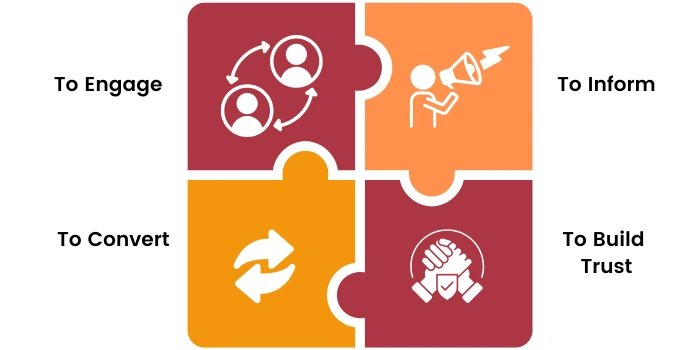
Informative content educates readers about a topic, product, or service in a clear, helpful manner. This type of content serves as a guide, answering questions or filling knowledge gaps for the audience.
Think of detailed blogs, FAQs, how-to guides, or explainer pages—resources that help users understand a subject, solve a problem, or learn something new. Well-written, informative content empowers readers by giving them actionable insights or clear takeaways.
|
Example: A blog on "Top 10 Strategies for Saving Energy" doesn't just provide knowledge but equips readers with steps they can immediately apply. |
Great web content does more than relay information—it keeps readers hooked. Engaging content uses a conversational tone, a well-crafted narrative, and thoughtful pacing to spark interest and maintain attention. Whether it’s an article, a story-driven landing page, or an interactive quiz, the goal is to connect with the audience on a human level.
This is where personality and voice shine, transforming dry text into content that feels relatable and lively.
|
Example: A brand blog that shares behind-the-scenes stories or uses humor and anecdotes doesn’t just inform—it captivates and connects. |
Conversion-focused content is all about inspiring action. Whether you want readers to sign up for a newsletter, purchase a product, download a guide, or share a post, your content must persuade and motivate. This type of content blends information with compelling calls to action (CTAs) and a sense of urgency or value. Effective landing pages, product descriptions, or promotional emails serve as prime examples.
|
Example: A CTA like “Download Your Free Guide Today” or “Sign Up to Save 20%” provides a clear direction and a tangible incentive, guiding readers toward taking that next step. |
Trust is the backbone of any long-term relationship, and web content plays a crucial role in establishing it. Readers are more likely to engage with a brand, service, or platform that exudes authority, expertise, and credibility. Content that’s well-researched, accurate, and transparent, like white papers, case studies, thought leadership blogs, or testimonials, helps build confidence.
When users see that you know your stuff, they’re far more likely to stick around, return, and rely on your expertise in the future. A comprehensive “About Us” page that tells your story or a series of success stories that showcase results can transform skepticism into trust.
Clear and effective communication is the cornerstone of great web writing. Online audiences don’t have the time, or patience, to decipher vague, complex, or meandering text.
Why is effective communication so important?
On the flip side, poor communication—cluttered ideas, heavy jargon, or lack of structure—can drive readers away. A website with ineffective content not only fails to convert but also damages trust and credibility.
Content structure is what transforms a wall of text into an engaging, easy-to-digest experience. Structure doesn’t just make content readable; it also improves user experience (UX) and SEO performance.
Good content structure ensures that:
In fact, search engines like Google reward well-structured content. By using clear headings, subheadings, and organized paragraphs, you increase the chances of ranking higher in search results.
Now that we’ve set the stage, let’s dive into actionable strategies to improve your website writing, enhance effective communication, and refine content structure.
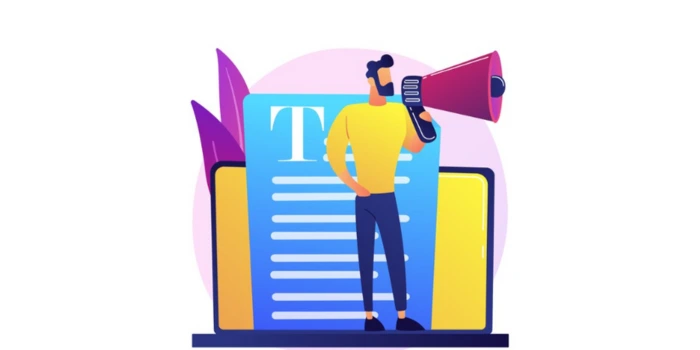
Understanding your audience is the cornerstone of creating great web content. Before you put pen to paper—or fingers to keyboard—you must know who you are writing for, what they care about, and how they consume information. If your content doesn’t speak directly to your audience’s needs, challenges, and interests, it will fail to connect, no matter how well-written it is.
Start by asking yourself a few key questions:
For instance, content for an audience of healthcare professionals will likely be formal, precise, and filled with evidence-backed details, while content for teenagers might be casual, lively, and filled with relatable language.
The more specific you are about their concerns and desires, the more targeted and relevant your content will be. Conduct surveys, interact on social media, or look at user feedback to identify recurring themes and pain points.
In contrast, a professional, no-nonsense tone will resonate more with executives seeking financial analysis. Matching your tone to your audience ensures that your message feels personal, approachable, and tailored to them.
Knowing your audience isn’t guesswork—it’s about using data and insights to form a clear picture. Here are some tools and methods that can help you dig deeper:
Once you’ve gathered insights about your audience, the next step is to craft content that speaks to them directly. Every sentence you write should show that you understand their perspective. Here’s how:
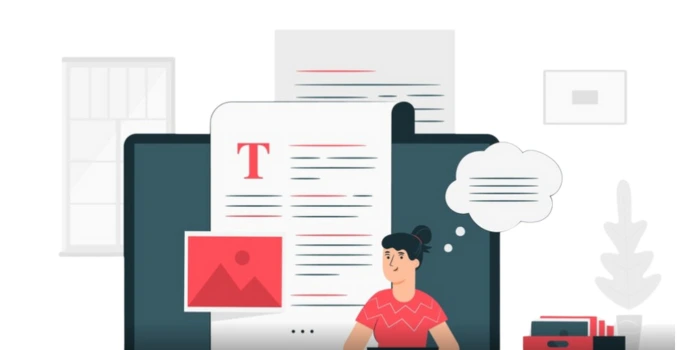
When it comes to writing for the web, clarity is key. Readers online don’t have the time or patience for long-winded, complicated sentences. They want information quickly and easily. The golden rule of web writing is to keep it simple. By focusing on clarity and brevity, you make sure your audience can consume your content effortlessly.
Here are a few tips for achieving clarity and conciseness:
For example:
By trimming down unnecessary words and focusing on the essentials, your content becomes easy to understand and more engaging. Remember, online readers appreciate brevity and clarity, and this approach will help you capture and hold their attention.
Read about seven effective tips on content writing for more information.

Web readers are often in a rush and rarely read every word. Instead, they scan content to find what they need quickly. To cater to this behaviour, it’s essential to structure your content for scannability—making it easy for readers to locate key points at a glance.
Here’s how to achieve this:
Read more on how to structure your website content for more impact.
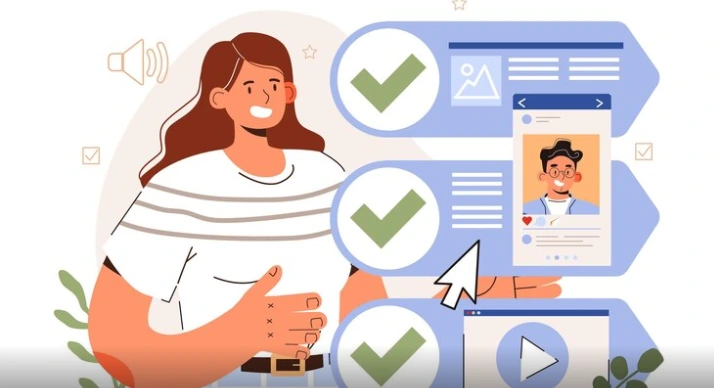
Headlines and introductions play a critical role in grabbing the reader’s attention. They are your first impression and often determine whether someone will stay on your page or click away. If your headline doesn’t spark interest or clearly convey value, readers will quickly move on to something else.
Here’s how to make your headlines and introductions more effective:
A strong headline should tell the reader exactly what they’ll get from the content. It should be specific, benefit-oriented, and provoke curiosity. Instead of vague titles, focus on the value you’re offering.
Your introduction needs to hook the reader instantly. This can be done with a question, a bold statement, or a surprising fact that makes them want to keep reading. A compelling hook draws readers in by addressing their interests or piquing their curiosity.
For example:
You may also want to read about 10 examples of content writing and when to use them.
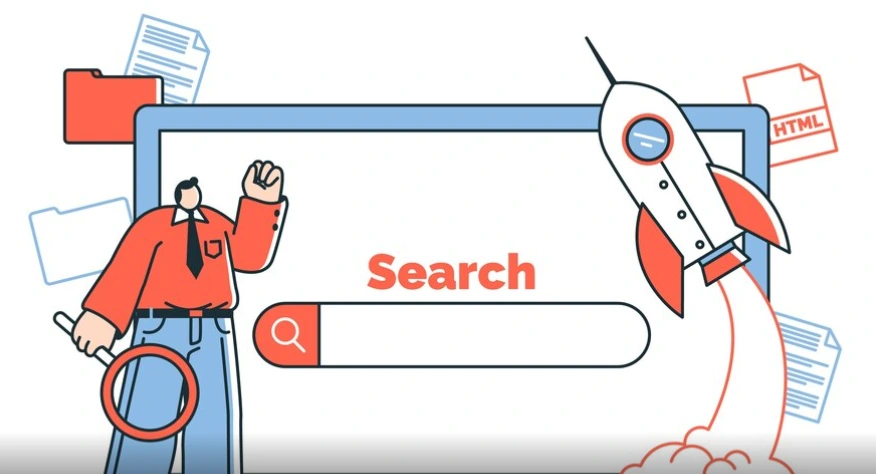
To ensure your content reaches the right audience, it needs to be search-engine-friendly. Optimizing for SEO (Search Engine Optimization) increases the chances of your content appearing in relevant search results, making it easier for users to find.
Here’s how to optimize your web content:
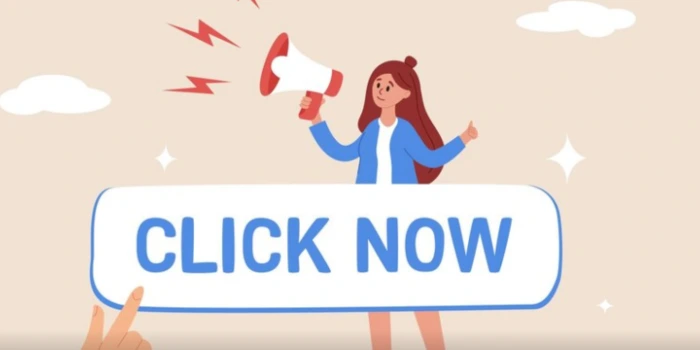
A key component of effective web content is the Call-to-Action (CTA). Every piece of content should drive the reader toward taking a specific action, whether it’s subscribing, downloading, or purchasing. A well-crafted CTA motivates the reader to take the next step in their journey with your brand. Here’s how to make your CTAs effective:
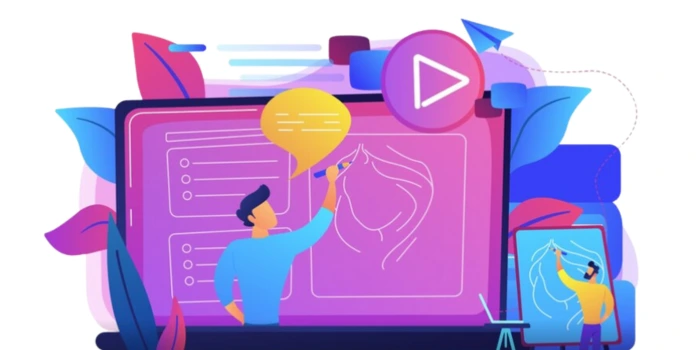
Visuals are a powerful tool in web writing, helping to enhance engagement and improve comprehension. Long blocks of text can overwhelm readers, but by incorporating images, infographics, and videos, you can make your content more appealing and digestible.
Here’s why and how you should use visuals:
Book a discovery call with LexiConn today for your visual content needs!
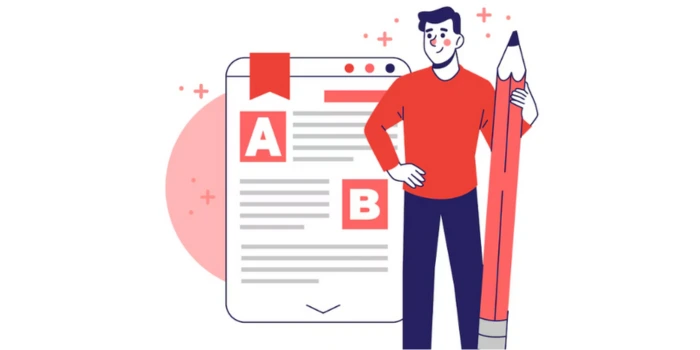
No matter how well-written your content is, mistakes can undermine its credibility and effectiveness. Typos, grammar errors, or awkward phrasing can distract readers and even make your content harder to understand. Editing and proofreading are essential steps to ensure your writing is polished and professional.
Here’s how to perfect your content:
Lexiconn Content offers a proven track record of delivering high-quality, engaging, and SEO-optimized content tailored to your brand’s voice and audience. With experienced writers who understand the nuances of effective communication, we ensure your content is clear, compelling, and results-driven.
Whether you're looking for blogs, website copy, or social media content, Lexiconn provides consistent, creative, and timely solutions that drive traffic and boost conversions. Trust us to handle your content needs, so you can focus on growing your business.
Writing for the web is about combining creativity with strategy. By understanding your audience, keeping content clear, and following a solid content structure, you can create web content that informs, engages, and converts.
Effective communication ensures your message comes through loud and clear, while strategic website writing makes your content both readable and search-friendly. Contact LexiConn today and grow your business with personalized content for your brand. Book your free 30 minutes call with us today!



I have read and accept the Privacy Policy
Read More